HubSpot's Positioning and Repositioning
Alfred Lua / Written on 28 August 2020
Back in 2006-2007, HubSpot started as an internet marketing software.
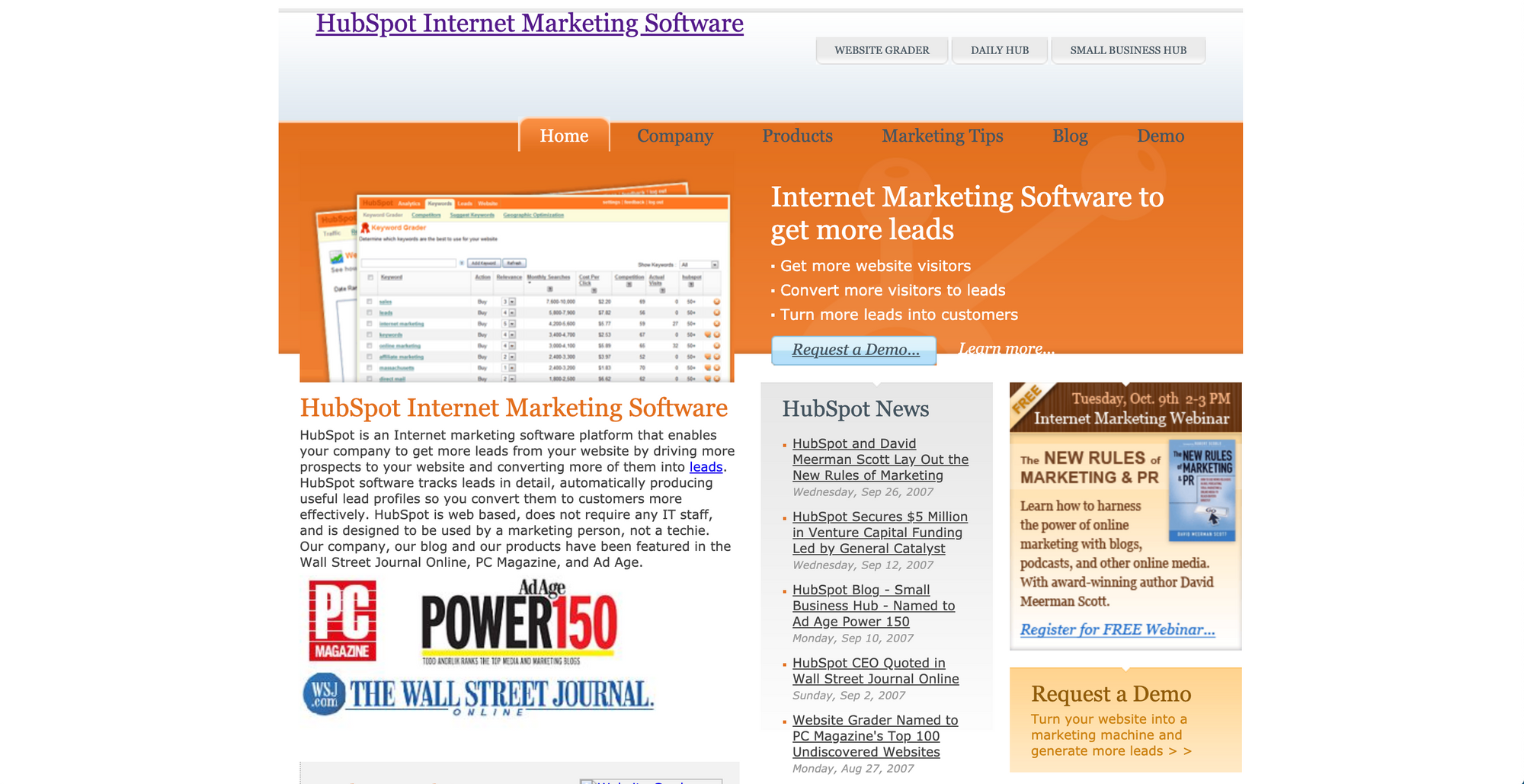 In the past 13-14 years, it not only became the inbound marketing software but also added sales, CRM, customer service, and CMS tools.
In the past 13-14 years, it not only became the inbound marketing software but also added sales, CRM, customer service, and CMS tools.
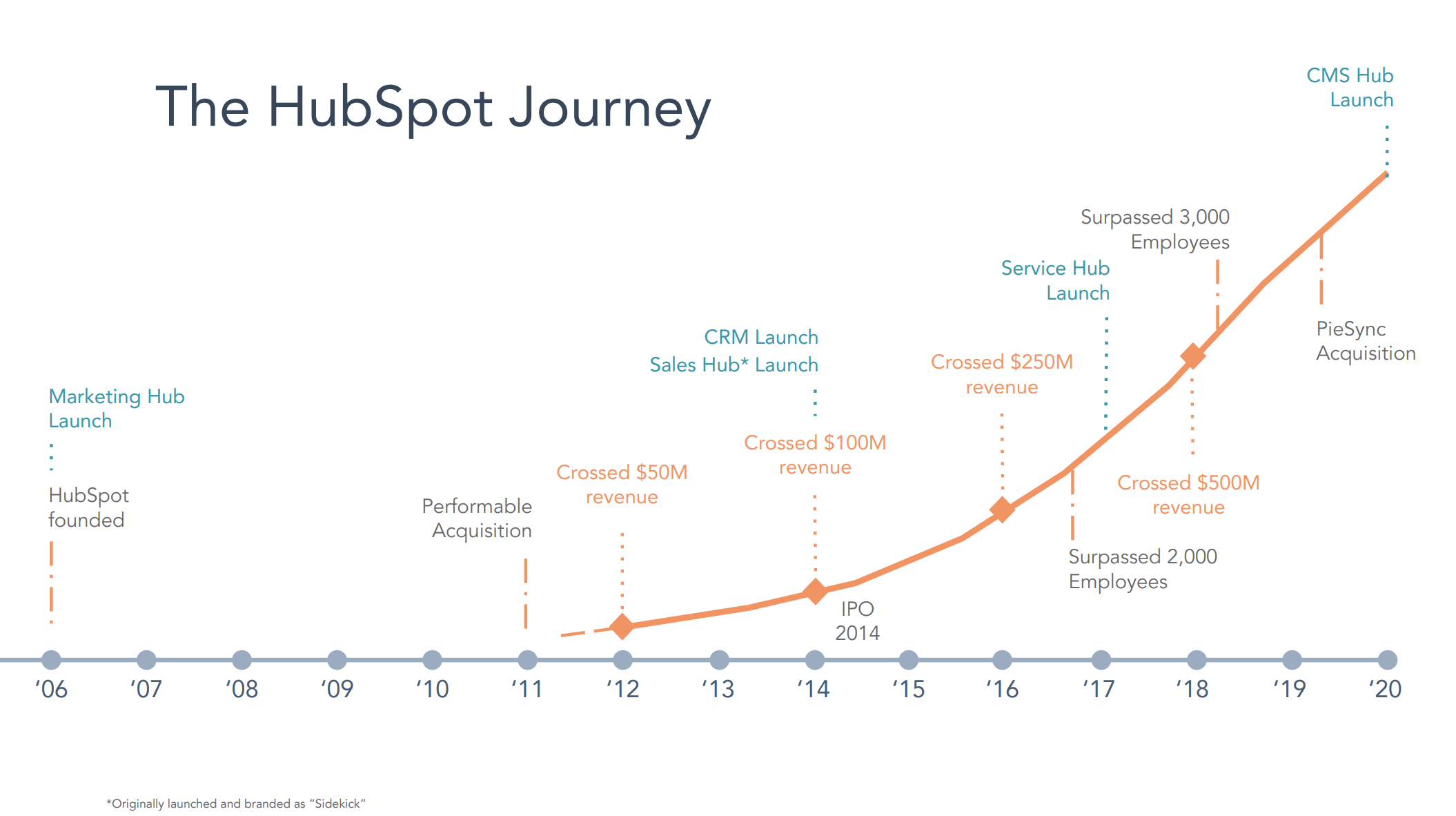 It is now, as written on its website, "a full platform of marketing, sales, customer service, and CRM software."
It is now, as written on its website, "a full platform of marketing, sales, customer service, and CRM software."
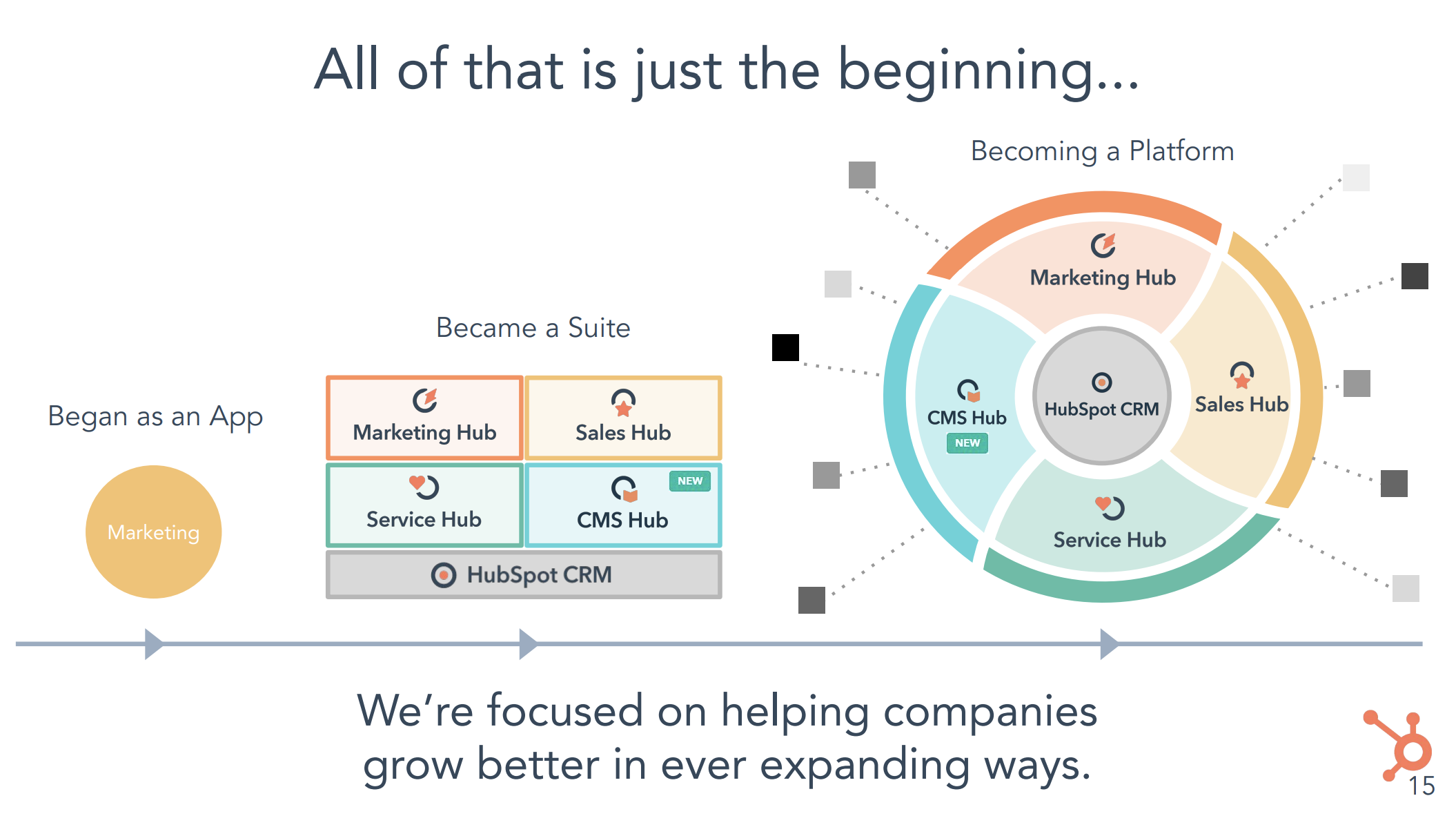 While it is still best known as the inbound marketing software, they have arguably done a great job shifting their company narrative and positioning over the year.
While it is still best known as the inbound marketing software, they have arguably done a great job shifting their company narrative and positioning over the year.
How have they done it?
HubSpot's (re)positioning playbook
Whenever HubSpot repositions itself, from being an internet marketing software to an inbound marketing software, from a software to a suite of products to a platform, it seems to follow a consistent playbook that contains four parts:
- Story
- Event
- Content
- Sales, accounts, and partners
1. Story
There is always a story—a change, to be precise.
For inbound marketing, it is that the way people shop and buy has changed. People don't want to be bombarded by sales reps. They search for solutions themselves. So businesses need to make it easy for customers to find them. When HubSpot launched Sidekick (which became its Sales Hub), it said the sales process has changed. Buyers can find a lot more information about a product even before speaking to a sales rep. Buyers have changed, so sellers should change, too. And so should sales platforms. When it launched its Service Hub, it said customers want a delightful end-to-end experience. It's no longer enough to create great content, pull people in, and then provide a "crappy sales experience", as Dharmesh Shah said at INBOUND 2017. Businesses need to help customers find them, provide a good sales experience, and follow up with great customer service. Finally, and interestingly, HubSpot launched its CMS Hub in April this year, instead of waiting until its annual event, INBOUND. Why? My guess is there was a change that everyone already knew themselves. Because of the pandemic, businesses need to go online and need a tool to manage their website (and marketing, sales, and customer service).
On top of describing the changes, HubSpot always backs them up with data. The sales process is broken. How does HubSpot know? Well, Forrester surveyed hundreds of buyers, and they said so.
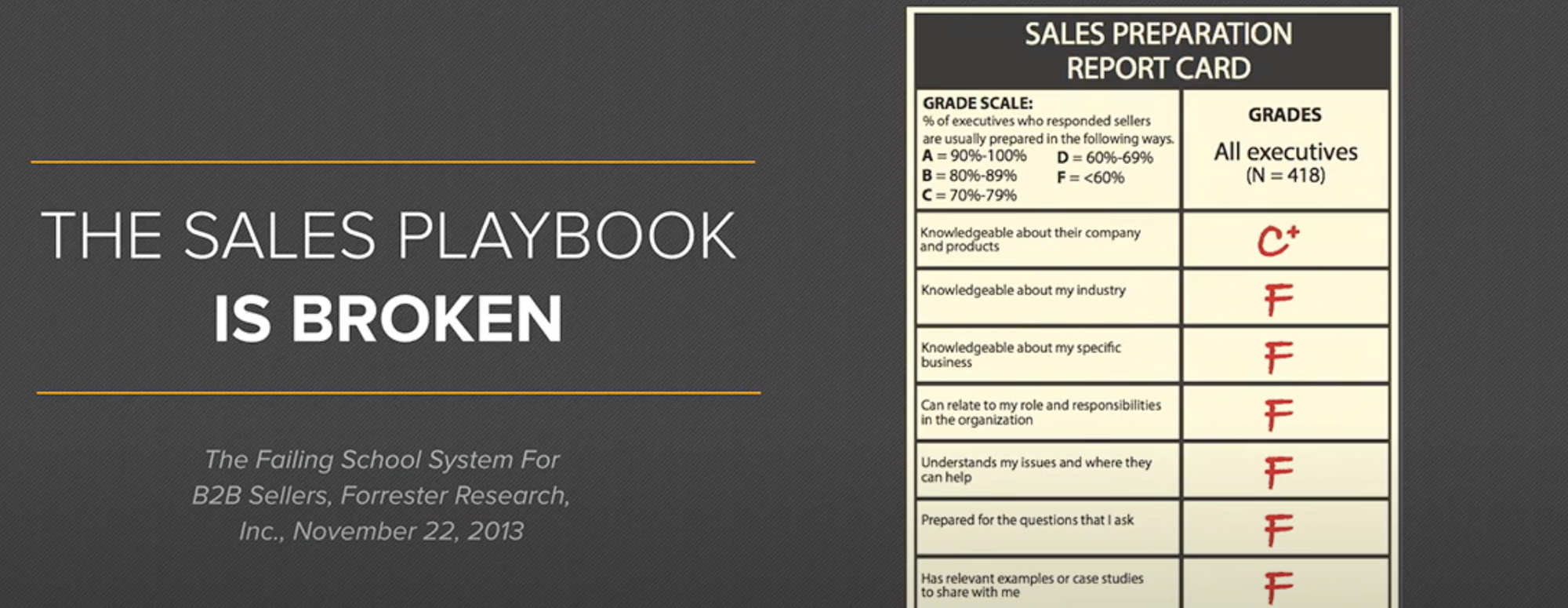 Customer experience is becoming more important. Why? HubSpot surveyed executives, VPs, and individual contributors and discovered the top two sources of information for making purchase decisions are word-of-mouth referrals and customer references. If you want to grow your company, you need happy customers, said HubSpot.
Customer experience is becoming more important. Why? HubSpot surveyed executives, VPs, and individual contributors and discovered the top two sources of information for making purchase decisions are word-of-mouth referrals and customer references. If you want to grow your company, you need happy customers, said HubSpot.
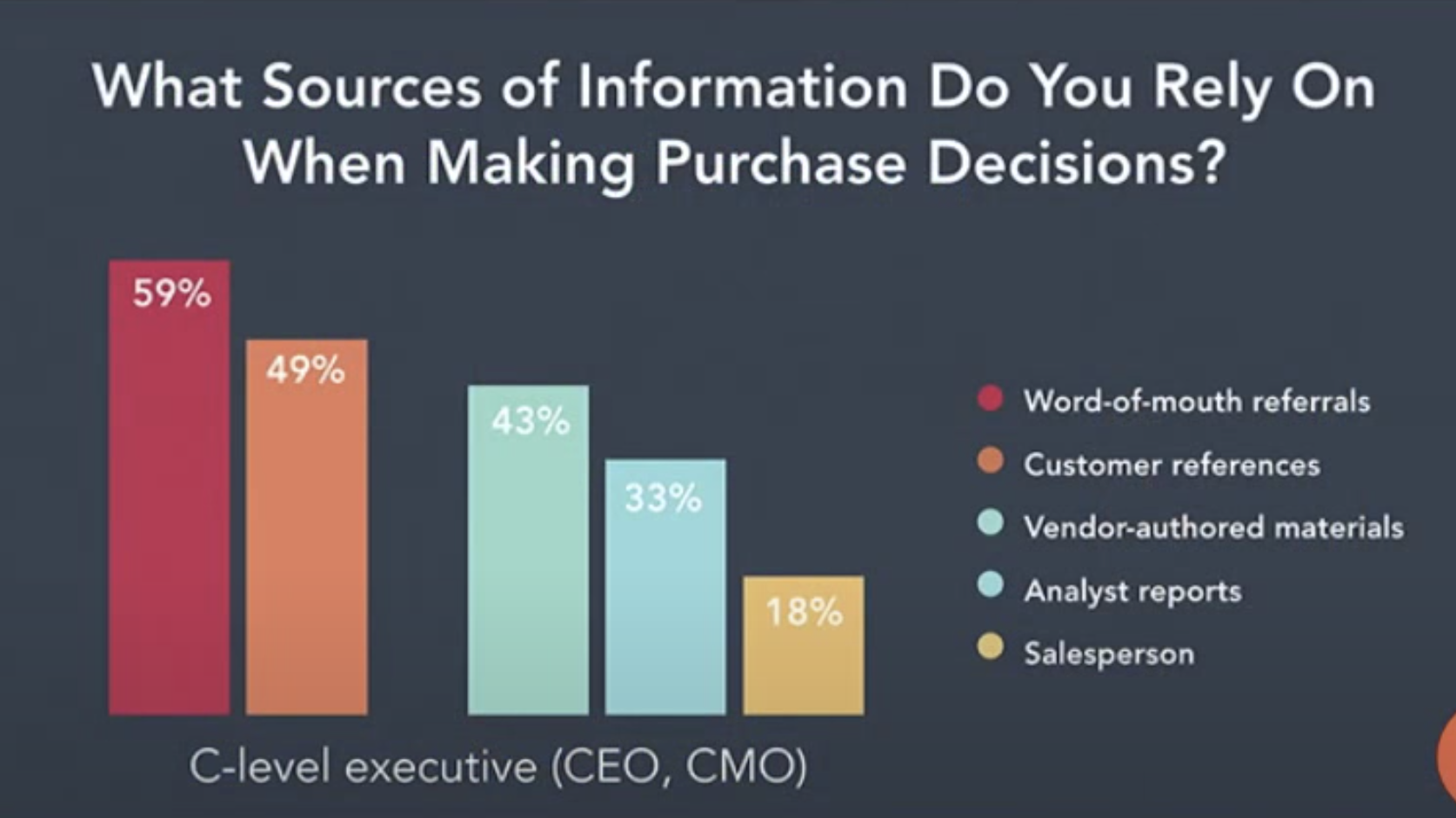 Having a story is one thing. Telling the story is another. Having people listen to your story is yet another thing. To achieve this, HubSpot has its annual conference, INBOUND.
Having a story is one thing. Telling the story is another. Having people listen to your story is yet another thing. To achieve this, HubSpot has its annual conference, INBOUND.
2. Event
INBOUND is an annual conference for HubSpot's users and partners. It has been around since 2012, and the last conference attracted more than 26,000 attendees. It always features a keynote by HubSpot's co-founders, Brian Halligan and Dharmesh Shah. I can't think of a better time to narrate a story. People might ignore your blog post or press release about your new products and positioning but if they pay to attend your event, you can be sure they are listening—especially if the CEO is speaking. Every year, HubSpot users, partners, and prospects pay to hear Halligan and Shah tell their stories.
Having the CEO narrate the story is key, as I explained in Drift and Creating New Categories:
For such a big shift for the company, the CEO should be involved to show how serious the company is about it. Even if the CMO or the highest-ranking marketer were to do it, it wouldn't be as effective. The CEO is the person most customers look towards for such big changes. You see this at the conferences of Apple, HubSpot, Salesforce, and so on where the biggest announcements are always made by the CEO. Creating and moving to a new category is a shift in the entire company strategy, not just a marketing campaign. After all, if the CEO doesn't even talk about it, is it really that important?
Some of the most successful tech companies have used this event-based marketing technique for years, as David Sacks explained. Apple, Salesforce, Tesla. And no surprise that Drift, whose founders and many team members came from HubSpot, also has an annual conference, HYPERGROWTH (all uppercase as well).
It is expensive and hard to put together a conference. This cost creates a signaling effect: "They spent so much money to put together this massive conference, they must know what they are doing and saying." When done consistently, people start looking forward to the events to learn what's the latest trend (i.e. story) and hear about new products.
3. Content
As the inventor of inbound marketing, HubSpot uses its own methodology to push new narratives forward. When I was doing content marketing at Buffer in a team of two, we often described HubSpot's content team as an army of writers because that's pretty much the case. It has a huge content team that writes every possible topic on every single subject that they want to be known for. The blog ranks for almost three million keywords and brings in more than five million page views every month.
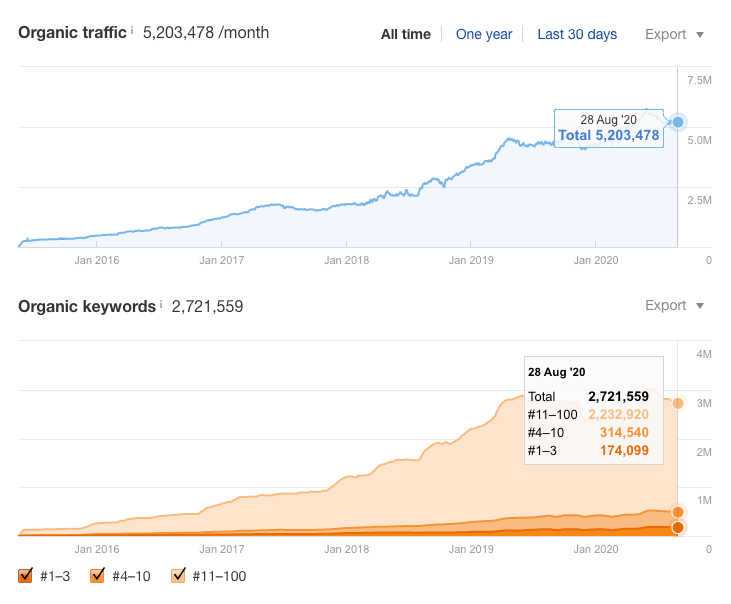 Whenever HubSpot wanted to push a new narrative forward, the team would create a lot of content about the new narrative. "What is this new trend? What should your business do to keep up? Here's how to do it..." Initially, the blog was all about inbound marketing—SEO, content marketing, social media, demand generation, and so on. When HubSpot added HubSpot Sales Hub, it introduced the Inbound Sales Methodology and even created an inbound sales certification program, taught by the CRO for the HubSpot Sales division, a sales director, a VP of sales, and more. To match its products (marketing, sales, customer service, and CMS), it now has a marketing blog, a sales blog, a service blog, and a website blog.
Whenever HubSpot wanted to push a new narrative forward, the team would create a lot of content about the new narrative. "What is this new trend? What should your business do to keep up? Here's how to do it..." Initially, the blog was all about inbound marketing—SEO, content marketing, social media, demand generation, and so on. When HubSpot added HubSpot Sales Hub, it introduced the Inbound Sales Methodology and even created an inbound sales certification program, taught by the CRO for the HubSpot Sales division, a sales director, a VP of sales, and more. To match its products (marketing, sales, customer service, and CMS), it now has a marketing blog, a sales blog, a service blog, and a website blog.
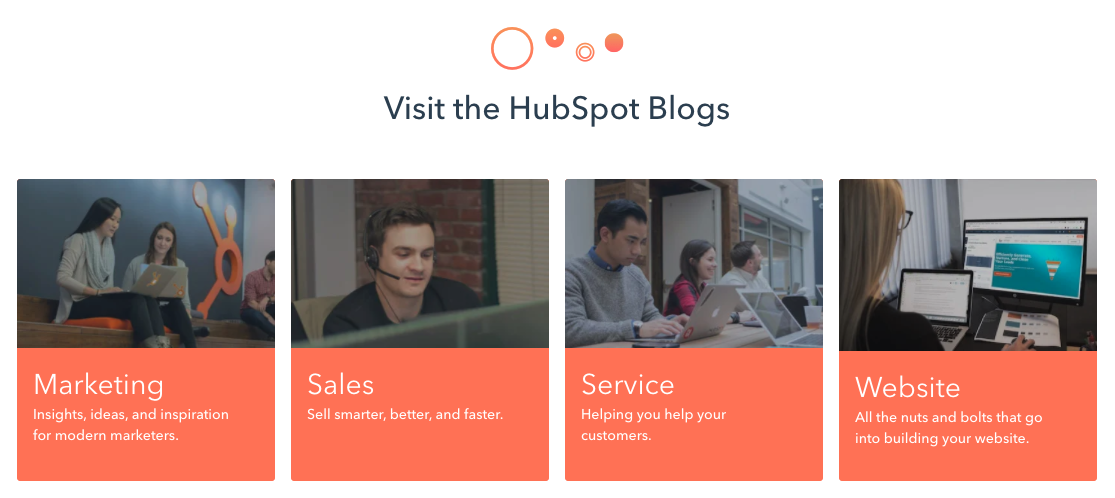 The hardest yet most powerful content to create, though, is a book. An actual book, not an e-book. If you want people to buy into a new narrative and trust you as an authority, you write a book about it. I wrote in Drift and Creating New Categories:
The hardest yet most powerful content to create, though, is a book. An actual book, not an e-book. If you want people to buy into a new narrative and trust you as an authority, you write a book about it. I wrote in Drift and Creating New Categories:
A common tactic is to write a book. Brian Halligan and Dharmesh Shah of HubSpot wrote Inbound Marketing: Get Found Using Google, Social Media, and Blogs; David Cancel and Dave Gerhardt wrote Conversational Marketing: How the World's Fastest Growing Companies Use Chatbots to Generate Leads 24/7/365 (and How You Can Too). If you want to be the authority in a category, you write a book. It seems silly but it works.
4. Sales, accounts, and partners
We need to hear an idea multiple times before we can remember it. So besides telling stories at events and creating content, I'm guessing HubSpot also uses its sales force, account managers, and partners to drum their new narratives into customers' and prospects' heads.
As bizarre as this might sound, you can pay HubSpot to consult you on your marketing, sales, and services strategy (read: upsell you to more expensive plans and cross-sell other products).
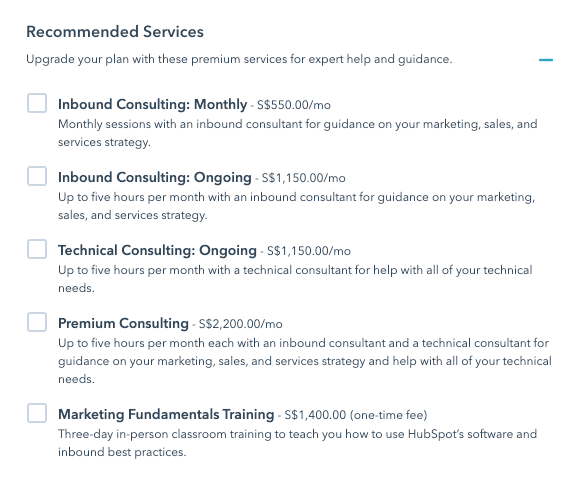 I tease HubSpot but I also think it's brilliant it has made this work. And if HubSpot's customers are paying it to consult and train them, they would be more easily bought into any new narrative that HubSpot introduces.
I tease HubSpot but I also think it's brilliant it has made this work. And if HubSpot's customers are paying it to consult and train them, they would be more easily bought into any new narrative that HubSpot introduces.
As HubSpot tells new narratives, it also describes how its product has evolved to meet the new demands and help its customers. While it started as an internet marketing software, its positioning shifted to being an inbound marketing software, and now a growth platform.
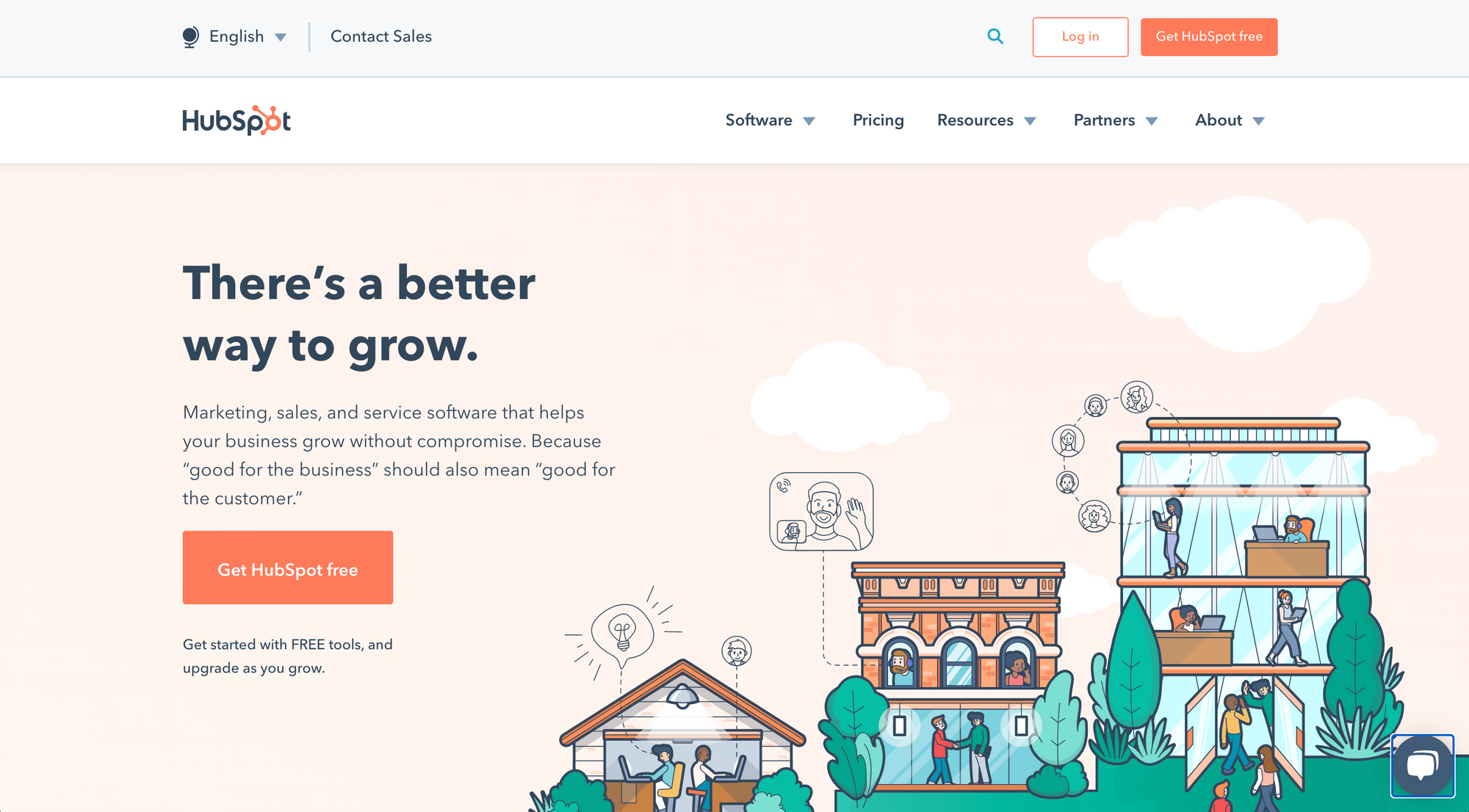
Categories and multiple doors
Given HubSpot's strong and consistent growth over the years, it will be silly of me to say the way it tells its narrative and positions itself is not good. But I wonder if it could be better.
Creating and owning the inbound marketing methodology probably contributed greatly to its success. But it also feels like the inbound marketing narrative was too successful. At least for me, and I believe for many people, HubSpot is still the inbound marketing company. Perhaps that is its intentional strategy and it will continue to work well. But since its product has grown from an inbound marketing software to a platform for marketing, sales, customer service, and content management, I feel it might need to create a new category as it did with inbound marketing. Just like how Drift created the conversational marketing category and is trying to create a new category, revenue acceleration.
It's definitely not easy because HubSpot's product does so many things now. A close competitor I would compare HubSpot to is Salesforce. Salesforce positions itself as a CRM. I'm guessing HubSpot is intentionally not calling itself a CRM so that prospects won't compare it directly with Salesforce. That's because the space you position yourself in determines the competitors that people compare you with and how they judge your product and your brand. On the other hand, HubSpot calls its product a growth platform. It says its mission is to help millions of organizations grow better. "Growth" feels like both an overused and an underused term to be a good category for HubSpot. It feels overused because "growth" is used to refer to so many different things; everything in business and in life can grow (and maybe that's what HubSpot is going at). It feels underused because there isn't an existing "growth software" category, which people are searching for. To be clear, this isn't to say positioning itself as a growth platform is bad. It might just need a lot more marketing (and a book) to turn this into a category and make itself the leader.
Instead of thinking of a category or description that encompasses all it does, after writing Why Wix Markets Itself as a Free Website Builder When It Is Much More Than That, I pondered if HubSpot could just focus on one core aspect of its offerings. Wix is a website builder that also has email marketing, social media marketing, and customer support functionalities. But its positioning strictly focuses on being a website builder. Will this work for HubSpot? I don't think so. Wix works on a staircase approach. Its customers need to build their websites with Wix before they can use the email and social media marketing features. Website is the first step of the staircase. On the other hand, HubSpot works on a multiple-door approach. Its customers can get started with any one of its Hubs, like going through any doors, and gradually expand into other Hubs. So it doesn't seem like Wix's super-simplified messaging strategy would work for HubSpot.
And maybe because of its multiple-door approach, it doesn't need to create and own a category, too. In my mind, I like to simplify complex ideas. Wix is a website builder, Drift is a revenue acceleration platform, Salesforce is a CRM software. But perhaps HubSpot doesn't have to be that one thing. It might just work fine being a marketing, sales, service, and CMS software. I was reminded of this diagram I created for ConvertKit and Its Hyper-Focus:
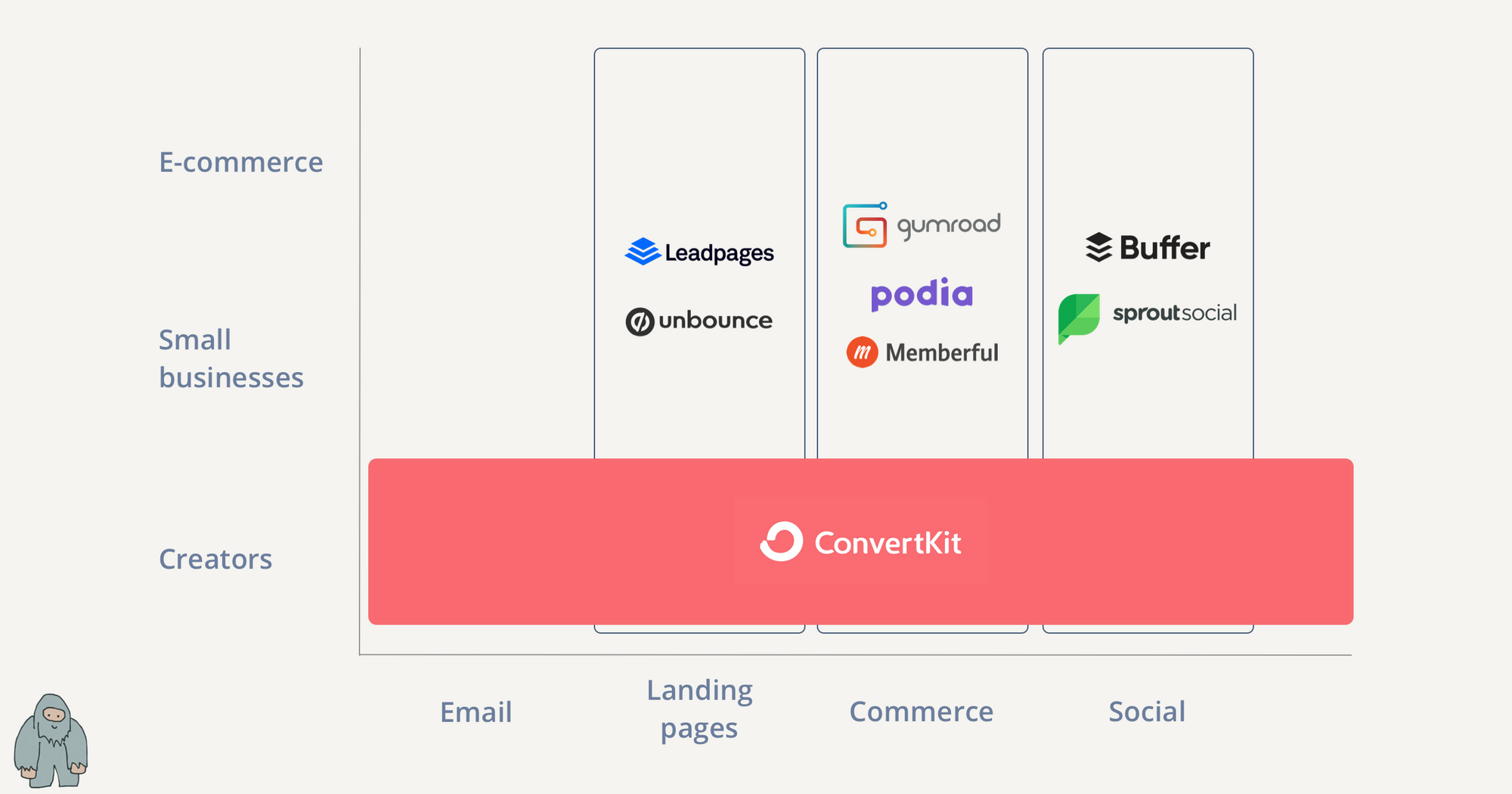 HubSpot might not be the best sales software or customer service software or CMS software (it's arguably one of the best marketing software). But by providing all these functions within a single platform, it offers value that specialized companies don't.
HubSpot might not be the best sales software or customer service software or CMS software (it's arguably one of the best marketing software). But by providing all these functions within a single platform, it offers value that specialized companies don't.
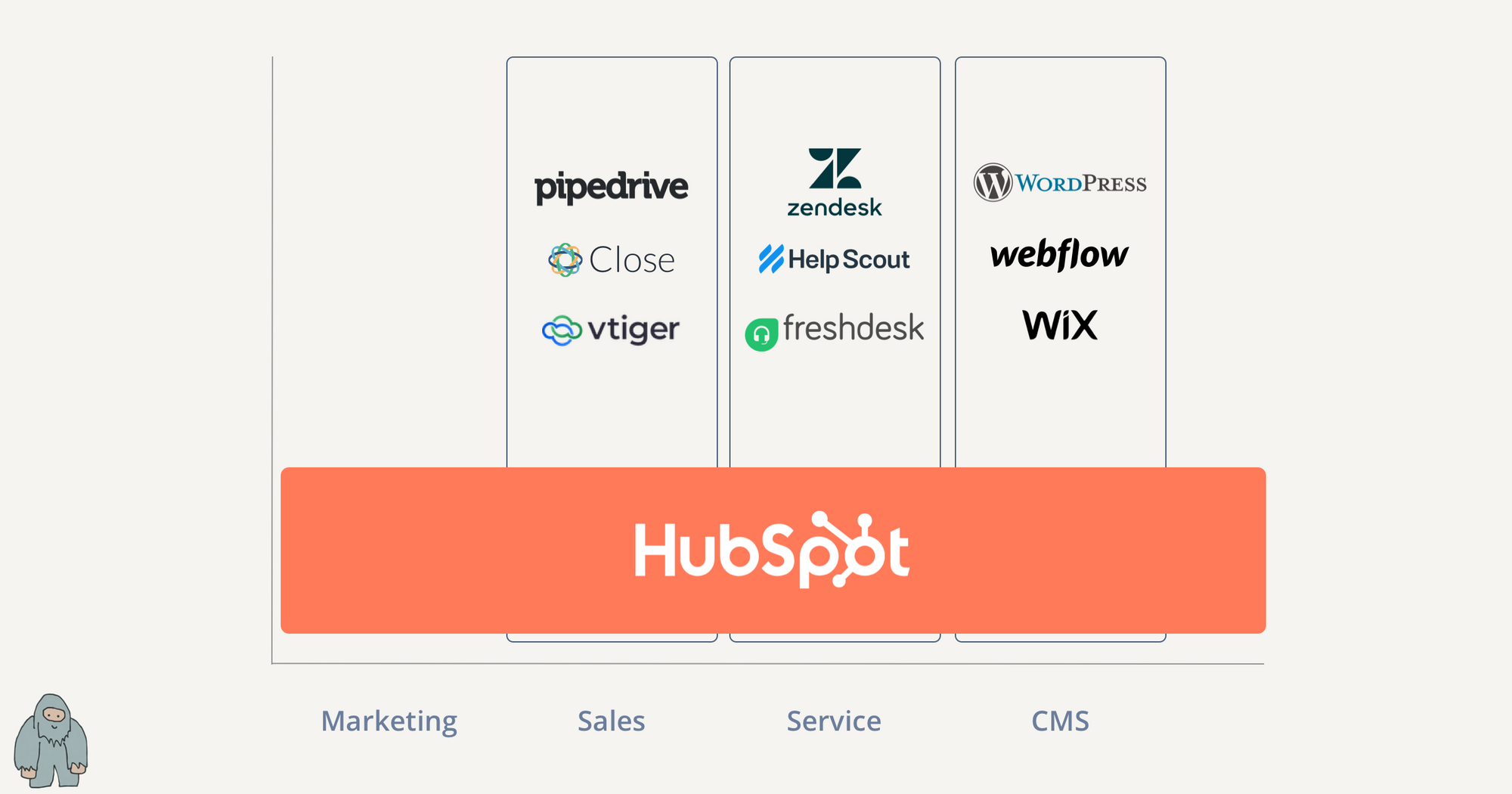
Different angles: CRM vs Marketing
This may or may not be a competitive strategy that can be sustained for a long time. Competitors like Salesforce, AgileCRM, and SugarCRM are all providing marketing, sales, and services (and using the exact same words), too. The only difference might be, as mentioned above, these companies position themselves as a CRM (it's even in their company names) while HubSpot seems to intentionally avoid calling itself a CRM and, at the same time, provide its CRM for free. HubSpot might be trying to tackle the market from a different angle from other CRM tools.
It'll be interesting to see if that positioning would play to HubSpot's advantage. I have a feeling it might.